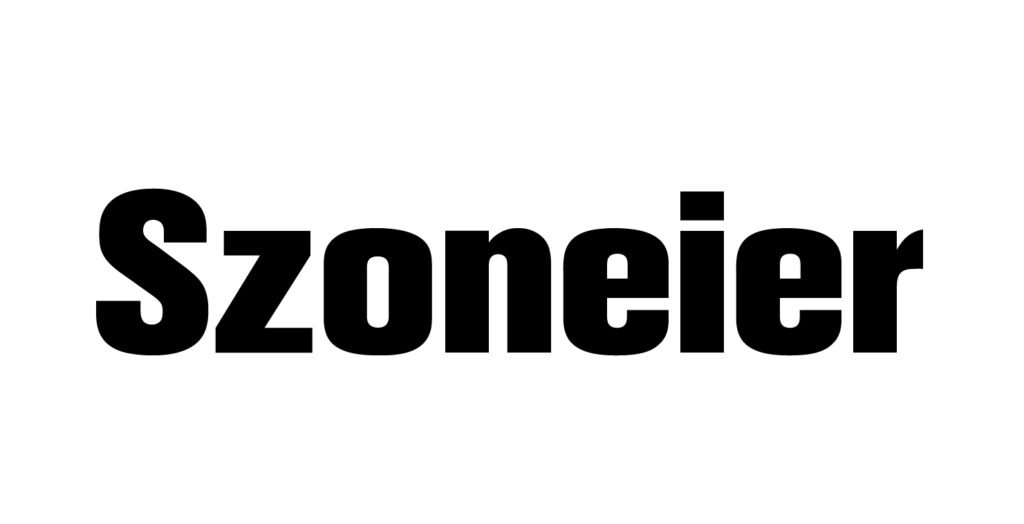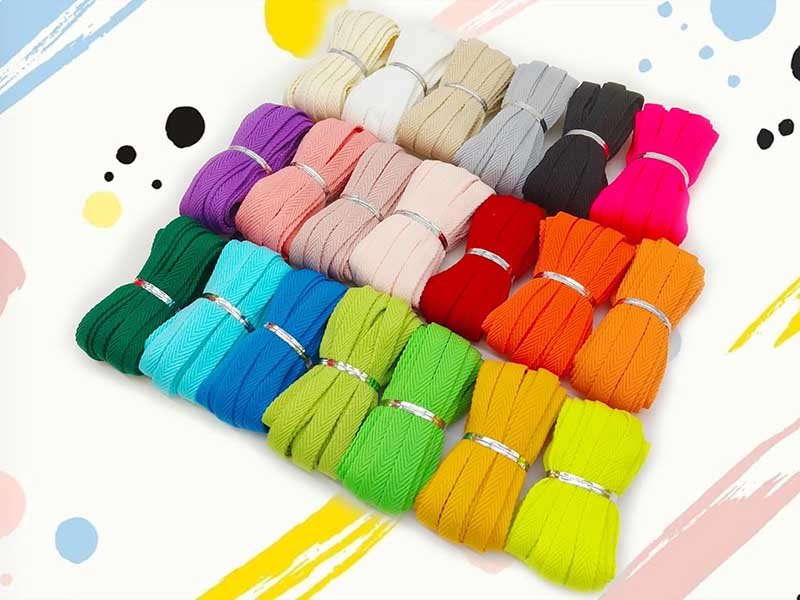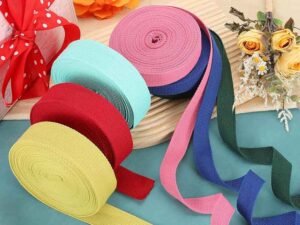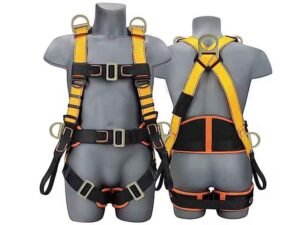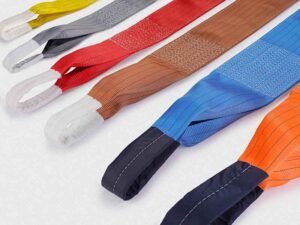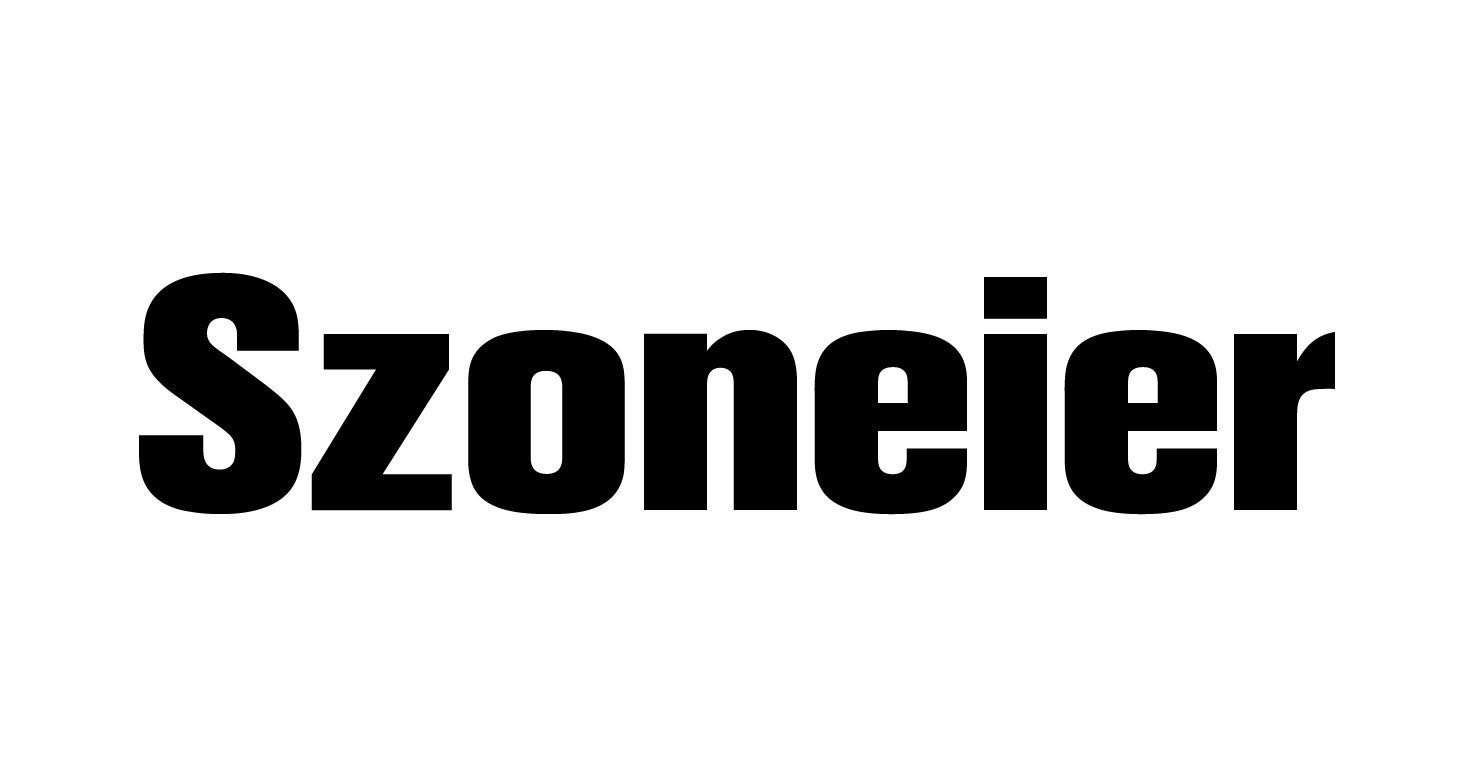In the world of textiles and manufacturing, some of the most essential components are also the most overlooked. One such unsung hero is twill tape. Though it may seem simple—a flat woven strip with a diagonal weave—twill tape plays a surprisingly versatile role across industries from fashion and packaging to medical and industrial design. For designers, manufacturers, and global buyers, understanding what twill tape is and how it’s used can unlock new functionality, better quality control, and even more creative branding possibilities.
Twill tape is a flat woven ribbon made with a herringbone-style weave, typically from cotton, polyester, or polypropylene. It’s used for binding seams, reinforcing edges, making drawstrings or straps, and branding. Unlike bias tape, it is not cut on the diagonal and offers more structure.
Whether you’re producing garment trims, medical ties, or luxury packaging, the material choice, weave, and finishing of twill tape can drastically impact your product’s appeal and performance. In fact, the decision to use twill tape over other bindings is often a hallmark of thoughtful design and functionality.
Let’s explore what twill tape really is, how it compares to other options, and how manufacturers like Szoneier can offer fully custom solutions to meet your specific OEM or private label needs.
What Is Twill Tape and How Is It Different from Other Fabric Tapes?
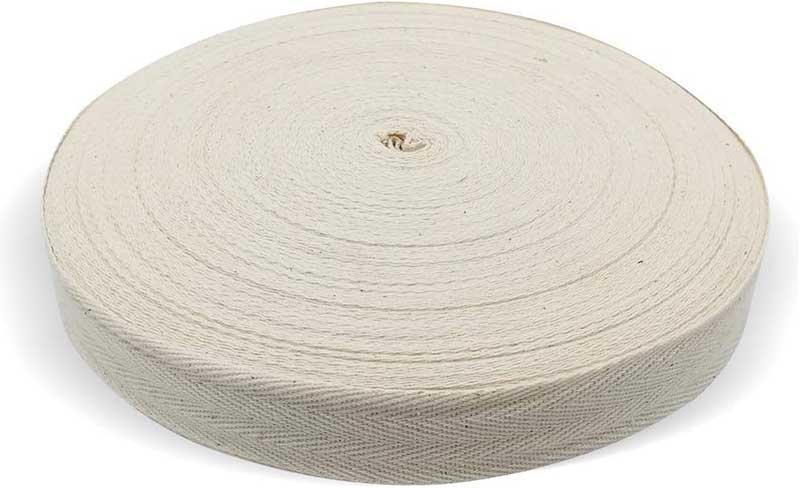
Twill tape is a woven flat fabric tape made in a diagonal (twill) pattern, offering strength and flexibility. Unlike bias tape, it is not stretchy and is ideal for structural uses.
Twill tape is defined by its unique weaving pattern—a twill weave, which creates a diagonal ribbing on the surface. This differs from plain weaves (used in grosgrain ribbon) or cut-on-the-bias constructions (as in bias tape).
Key Properties of Twill Tape:
- Flat, woven, and durable
- Typically non-stretch
- Diagonal weave gives it a sturdy yet flexible body
- Available in various widths (commonly 1/4 inch to 2 inches)
Twill Tape vs. Bias Tape vs. Grosgrain Ribbon
| Feature | Twill Tape | Bias Tape | Grosgrain Ribbon |
|---|---|---|---|
| Weave Type | Diagonal (twill) | Cut on fabric bias | Plain weave with ribs |
| Flexibility | Medium | High (stretchy) | Low |
| Typical Material | Cotton, Poly | Cotton, Poly Blend | Nylon, Polyester |
| Use Case | Reinforcement, straps | Edge binding, curves | Decorations, sashes |
Twill tape’s non-stretch nature makes it especially suitable for applications where shape retention and edge reinforcement are needed. For example, it’s ideal in apparel waistbands, apron ties, canvas bags, and medical gowns.
If you’re a product developer deciding between options, twill tape offers a cleaner, more stable finish than bias tape and more strength than decorative grosgrain.
Szoneier supplies a wide range of twill tapes for all these use cases—with bulk color, size, and logo customization available.
Which Materials Are Commonly Used for Twill Tape Production?
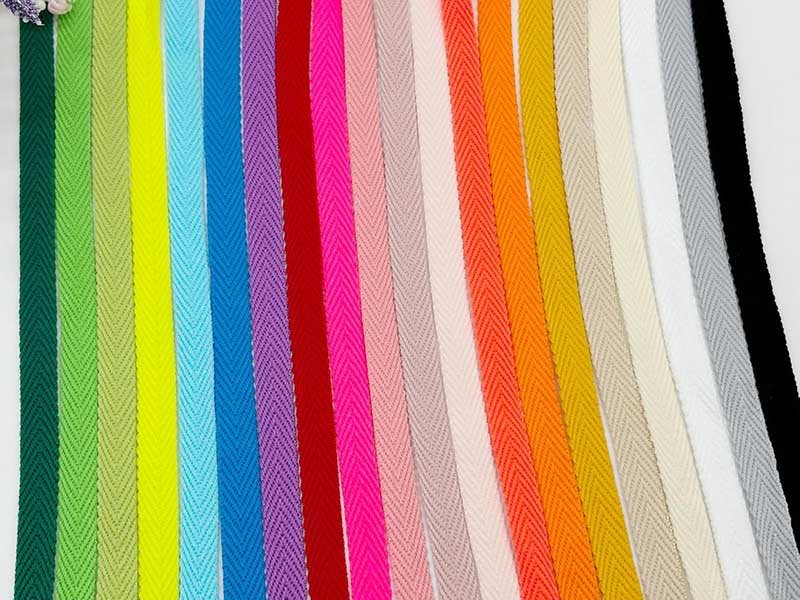
Twill tape is typically made from cotton, polyester, or polypropylene. Each material offers different characteristics in terms of durability, softness, and cost.
The performance and look of twill tape depend heavily on the raw material. Different use cases demand different fabric properties—some call for softness, others require water resistance or affordability. Here’s a breakdown of the most common materials used in twill tape manufacturing:
1. Cotton Twill Tape
- Soft, breathable, and natural
- Easily dyed or printed
- Ideal for apparel, sewing, baby products, and sustainable goods
2. Polyester Twill Tape
- Durable, colorfast, and resistant to moisture
- Slightly glossy surface
- Great for packaging, uniforms, activewear
3. Polypropylene (PP) Twill Tape
- Most economical
- Water-resistant and chemical-resistant
- Suitable for disposable or industrial items
4. Blended Yarns
- Cotton-poly blends combine softness and strength
- Recycled polyester for eco-conscious applications
Comparison Table:
| Material | Softness | Water Resistance | Eco-Friendly | Printability | Cost |
|---|---|---|---|---|---|
| Cotton | High | Low | High | Excellent | Medium |
| Polyester | Medium | High | Medium | Excellent | Medium |
| Polypropylene | Low | Very High | Low | Limited | Low |
| Recycled Poly | Medium | High | High | Excellent | Medium |
Szoneier offers all these material types and provides consultation on matching materials to your application, whether it’s hospital use or high-end garment branding.
How Is Twill Tape Used in Fashion, Crafts, Medical, and Industrial Fields?

Twill tape is widely used in fashion, sewing, medical supplies, and industrial applications for reinforcing seams, making straps, and binding edges.
One of the most compelling aspects of twill tape is its universal usability. From haute couture studios in Paris to factories producing hospital gowns, twill tape adds strength, finish, or functionality wherever it’s applied.
1. Fashion and Apparel
In clothing design, twill tape is used for:
- Waistband reinforcement
- Drawstring channels
- Shoulder and neckline stabilization
- Hanger loops and labels
2. Crafts and DIY
Crafters use twill tape for:
- Sewing project trims
- Apron ties and quilt bindings
- Hanging loops or keychains
3. Medical Use
Hospitals and PPE manufacturers rely on twill tape for:
- Surgical mask ties
- Gown closures
- Drapery edge reinforcement
4. Industrial Applications
Twill tape is also used in:
- Packaging straps
- Cable bundling
- Furniture upholstery
Twill tape’s adaptability means you can order one material in bulk and still serve multiple product lines. Szoneier has experience delivering twill tape rolls tailored to each industry’s needs—with certifications and packaging options to match.
Do Twill Tape Widths, Thickness, and Finishes Affect Performance?
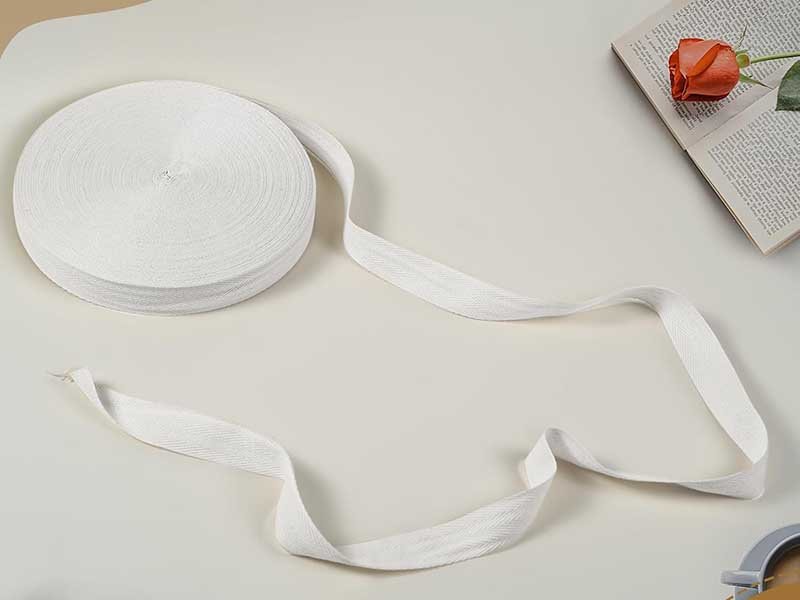
Yes, twill tape’s width, thickness, and surface finish significantly impact its strength, flexibility, and suitability for different sewing and industrial uses.
Not all twill tape is created equal. While the weave and material form the foundation, the width, thickness (GSM), and finishing treatment determine how twill tape behaves in real-world use.
1. Width Matters
Wider tapes offer more surface contact and visual impact—ideal for waistbands or statement pieces. Narrow tapes are better for delicate work like babywear or surgical gowns.
2. Thickness = Strength
GSM (grams per square meter) helps define how thick or dense the tape is:
| Application | Ideal GSM Range |
|---|---|
| Lightweight garments | 60–80 GSM |
| Medical/PPE | 80–100 GSM |
| Industrial straps | 100–160 GSM |
| Upholstery/Packaging | 120–180 GSM |
3. Finish Types
- Pre-shrunk: For garments that will be washed or ironed
- Stiffened: For shape retention
- Soft finish: For children’s clothing or branding use
- Dyed or printed: For logos or color coordination
Choosing Wisely
Selecting the wrong width or finish can lead to fraying, folding, or functional failure under tension. Szoneier works with clients to test samples and adjust specs during development—especially for brands needing performance consistency.
Is Twill Tape Suitable for Custom Printing, Dyeing, or Branding?
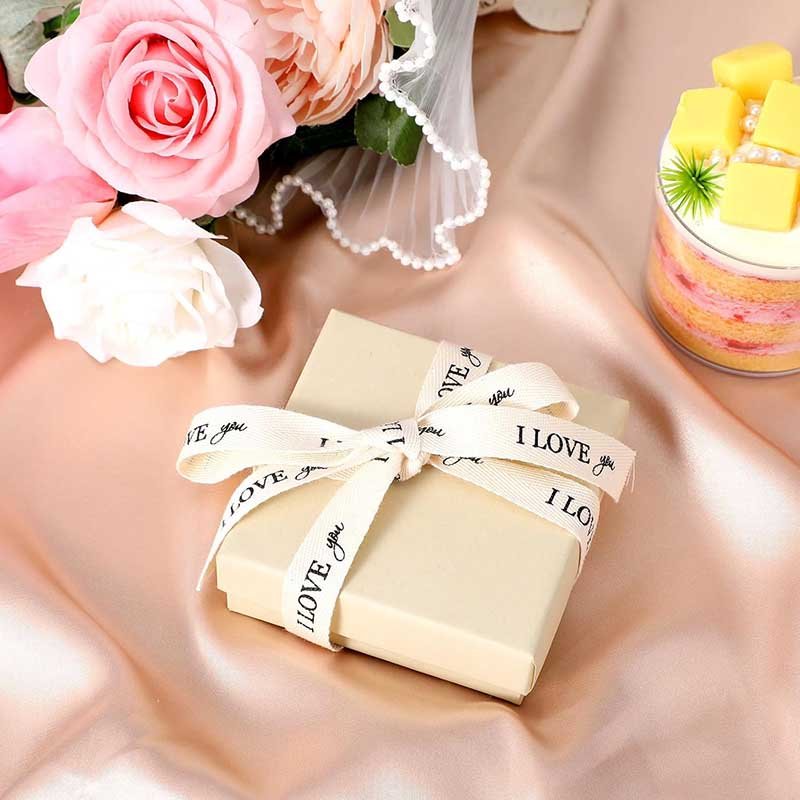
Yes, twill tape is highly customizable and can be screen printed, dyed, or embroidered with logos and colors, making it a strong branding tool in fashion and packaging.
Twill tape isn’t just a functional material—it can be a branding asset. For fashion brands, high-end retailers, and boutique manufacturers, the ability to customize tape with logos, colors, or messages transforms it from basic trim to a design and identity feature.
Printing Methods:
- Screen Printing: Ideal for bold logos or text on cotton twill tape
- Heat Transfer Printing: Works well on polyester or blends
- Foil Printing: For luxury accents or metallic visuals
Dyeing Options:
- Custom Pantone dye matching
- Reactive dyes for cotton (soft hand feel)
- Disperse dyes for polyester (durable, fast colors)
Use Cases for Branding:
- Apparel: waistbands, hoodie drawstrings, inside labels
- Packaging: tie ribbons, branded wrapping for luxury goods
- Events: wristbands, hangtags, gift bag accessories
Tip: Brands using printed twill tape report up to 23% better recall and perceived value in unboxing experiences (source: internal packaging study).
At Szoneier, we offer full-color logo printing and Pantone color matching, along with MOQ flexibility. Whether you’re producing 500 luxury boxes or 50,000 garments, we tailor the tape to match your brand voice.
What Are the Benefits of Using Twill Tape in Eco-Friendly or Reusable Products?
Twill tape made from organic cotton or recycled polyester is biodegradable or recyclable, making it ideal for sustainable fashion, packaging, and reusable consumer goods.
Sustainability is no longer optional for modern brands. Consumers, especially Gen Z and millennials, demand transparency, recyclability, and ethical sourcing. Twill tape made from organic fibers or recycled yarns fits seamlessly into sustainable product strategies.
Eco-Friendly Materials:
- Organic Cotton Twill Tape: GOTS-certified, biodegradable, pesticide-free
- Recycled Polyester Twill Tape: Made from post-consumer plastic bottles, GRS certified
- Dyes: Low-impact or plant-based dye systems available
Eco Applications:
- Compostable fabric bags and totes
- Reusable garments and packaging
- Gift wrapping for eco-product launches
- Sustainable children’s or maternity clothing
Certifications Buyers Should Look For:
- GOTS (Global Organic Textile Standard)
- OEKO-TEX® Standard 100
- GRS (Global Recycled Standard)
Szoneier partners with certified mills and offers 100% compostable packaging options with twill tape. We help small brands and global chains align with ESG and green sourcing targets, delivering traceable, earth-friendly trims at scale.
How to Source Twill Tape for OEM and Custom Applications from China?
To source custom twill tape, work with OEM suppliers like Szoneier who offer flexible MOQ, sample services, material selection, and fast delivery for global buyers.
Sourcing from China remains one of the most cost-efficient and customizable solutions for twill tape buyers. But navigating the process requires finding a partner—not just a supplier.
Key Steps in OEM Twill Tape Sourcing:
- Define Your Application: Apparel, packaging, medical, etc.
- Select Your Specs: Material, width, GSM, finish, printing needs
- Request Samples: Review multiple weave types and finishes
- Confirm MOQ & Lead Time: Szoneier supports MOQs as low as 1000m per color/size
- Check Certifications: Compliance for target market (EU, USA, etc.)
- Lock Packaging & Shipping: Roll packing, cut pieces, or bagged units; express or sea freight
Why Work with Szoneier?
- In-house weaving and finishing
- Bilingual customer service
- Fast prototyping (3–7 days)
- On-time global delivery with export documentation
Whether you’re a startup or a buying office, Szoneier provides free design consultation and a streamlined production experience that delivers both quality and responsiveness.
Final Thoughts: Partner with Szoneier for Custom Twill Tape Solutions
Twill tape is more than a trim—it’s a functional, aesthetic, and sustainable tool that elevates products across industries. Whether you’re building a fashion label, designing eco-friendly packaging, or producing hospital-grade PPE, the right twill tape enhances durability, branding, and usability.
Szoneier brings over 18 years of experience in webbing and twill tape manufacturing, offering:
- Cotton, polyester, PP, and eco yarns
- Custom widths, GSM, and weave patterns
- Dyeing, printing, branding, labeling
- Low MOQs and short lead times
Need a sample? Want to brand your own twill tape?
Get in touch today at www.szoneierwebbing.com or email us at info@szoneierwebbing.com for a quick quote or free consultation.
Let’s turn your idea into a functional, premium-quality product—starting with the right tape.
